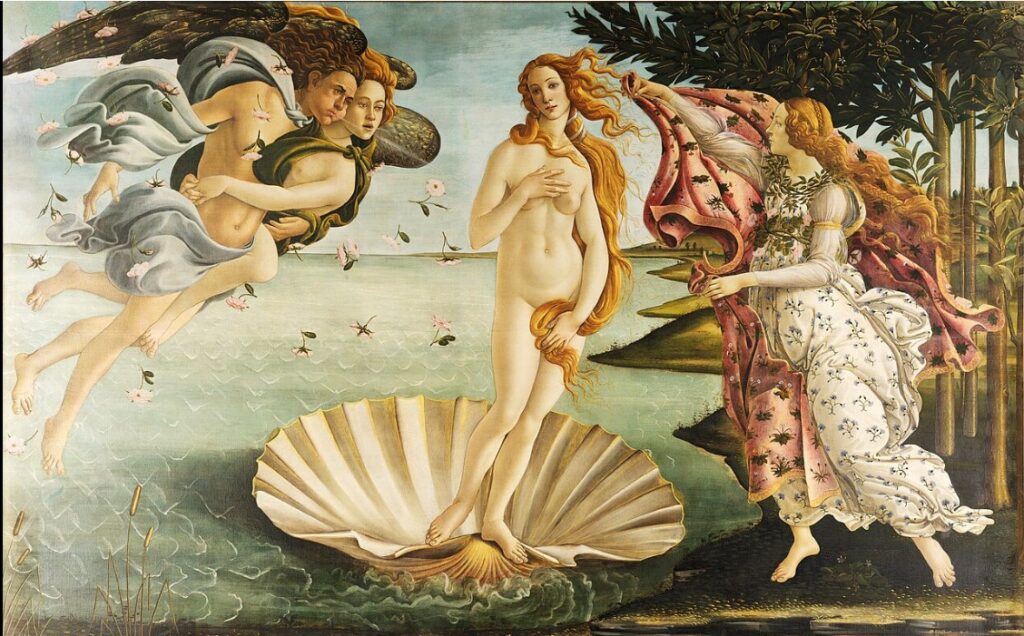
Ekphrastic poetry uses art for inspiration. Poems can be triggered by the visual impact of a painting or sculpture on its own, but I like to explore the life of the artist, and the circumstances in which the work was created. It isn’t essential but it works for me.
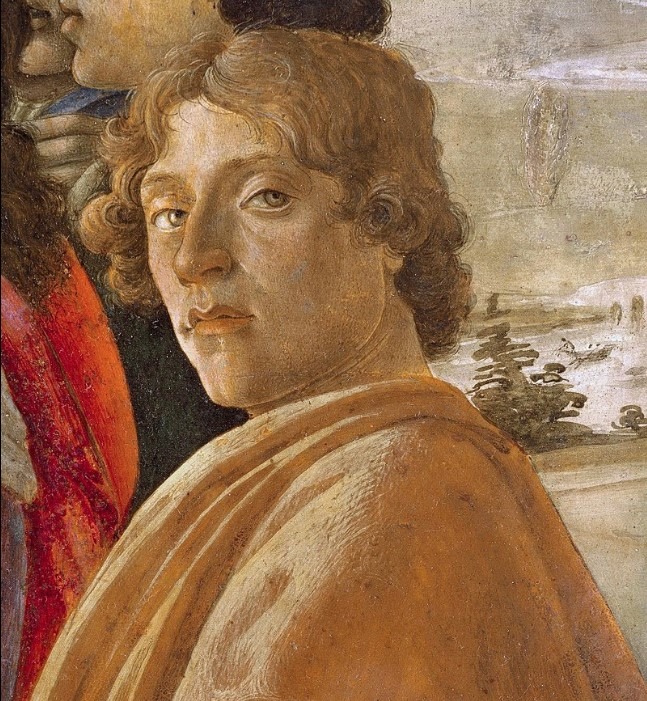
Digging deeper can often trigger an idea for a poem, but I usually end up with a mass of information which is rarely used. The most recent painting I’ve worked with is The birth of Venus by Alessandro Botticelli. The deeper I went, the more I realised how little is known about its provenance, yet I came across multiple online sites making authoritorial statements, many of them contradictory. In these times of fake news and aternative truths, researching The birth of Venus showed how difficult it’s become to be sure about anything.
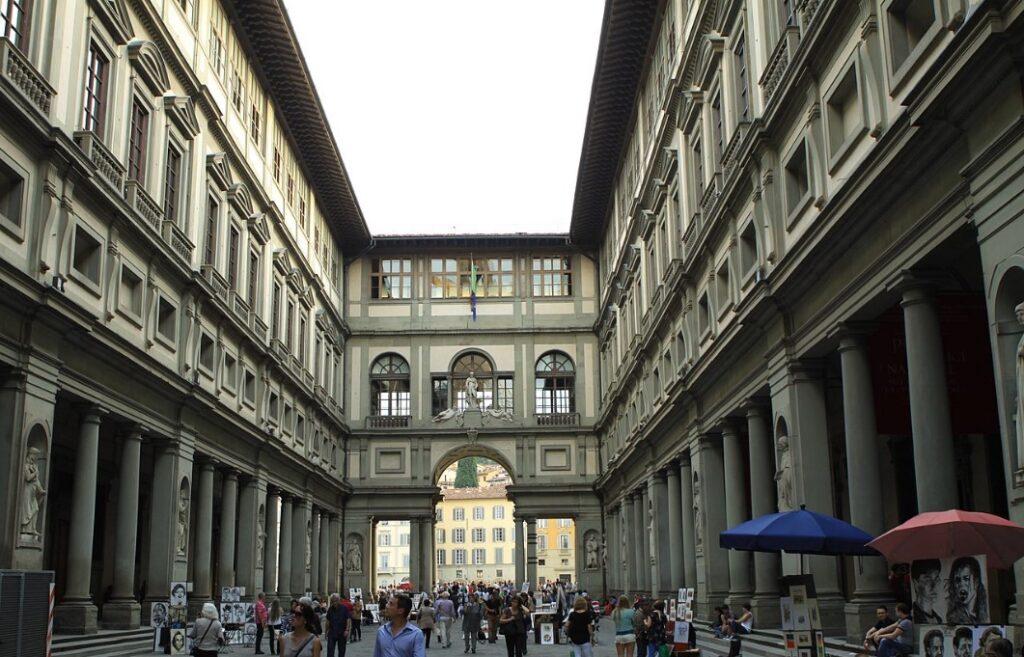
No one knows exactly when it was painted. The Uffizi Gallery, where it’s been since 1919, claims between 1482 and 1485, while other art focussed sites say 1484, 1485 or 1486. The safest conclusion is to say between two dates or to use the phrase thought to be completed by….
The painting is said to have been commissioned for the wedding of Lorenzo di Pierfrancesco de Medici, cousin to Lorenzo Medici, and Semiramide Appiani in 1482. Inventories of their possessions – from the late 1490s to early 1500’s – include two of Botticelli’s earlier works with mythological themes: Pallas and the Centaur and Primavera, but The birth of Venus is not mentioned.
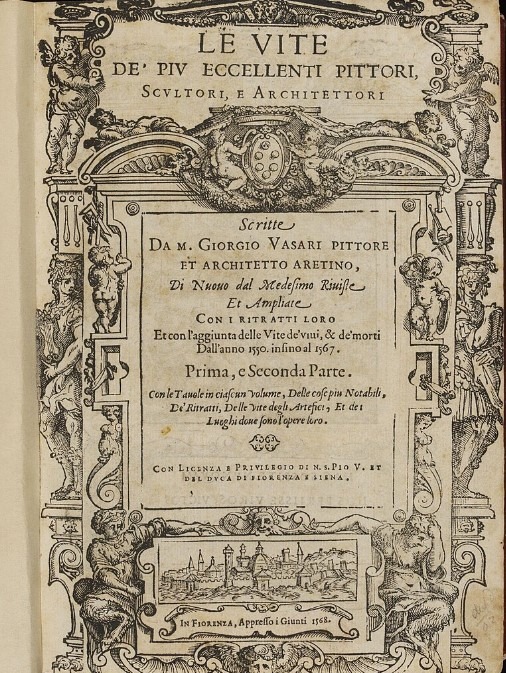
The first reference is from Giorgio Vasari, in the 1550 edition of his book the Lives of the Most Excellent Painters, Sculptors, and Architects. Vasari gives a short biography of Botticelli and claims to have seen Birth of Venus and Primavera side by side in the Villa di Castello, owned by Lorenzo di Pierfrancesco di Medicci.
Vasari is considered an unreliable source but it’s the only one we have. Compare this to the 21st century where every detail of individual lives is recorded, either by tracking the IP number of our computers or tracing the movement of our phones, not to mention CCTV in public places.
The painting didn’t reach the Ufizzi, where it’s currently displayed, until early in the 20th century. For what is probably one of the best known and reused pieces of art, it seems to have spent most of its life in relative obscurity.
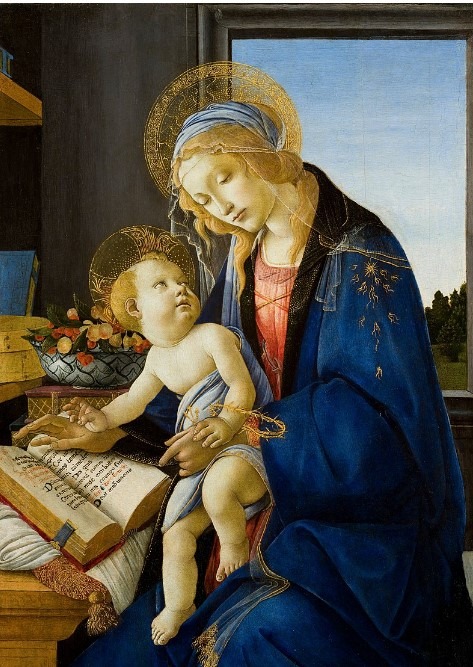
The 1400’s was the time of the renaissance. This marked a move away from the church as a source of inpsiration for artists, and a revival of interest in classical forms and the myths of ancient Greece and Rome. Botticelli’s early career, like all artists of the time, was spent on commissions for the church. He painted madonnas and saints, and was invited to Rome to contibute to the wall frescos of the Sistine Chapel.
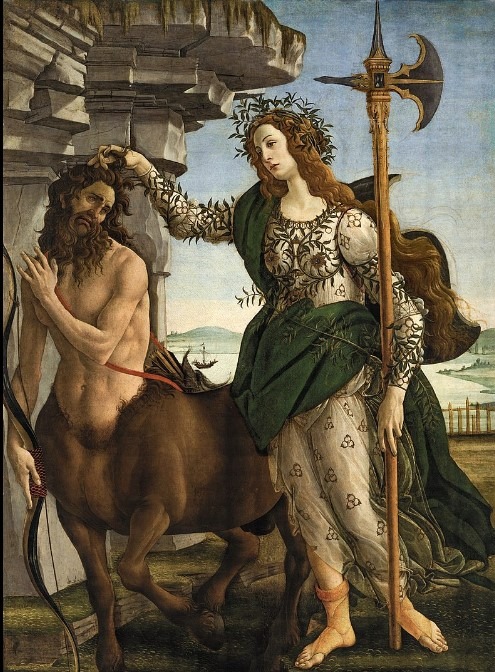
He had already painted Pallas and the Centaur, and Primavera, both based on mythological stories and both commissioned for the Villa di Castello.
The birth of Venus was the first full-size naked woman in a non-biblical setting. It was never intended to be seen publicly.
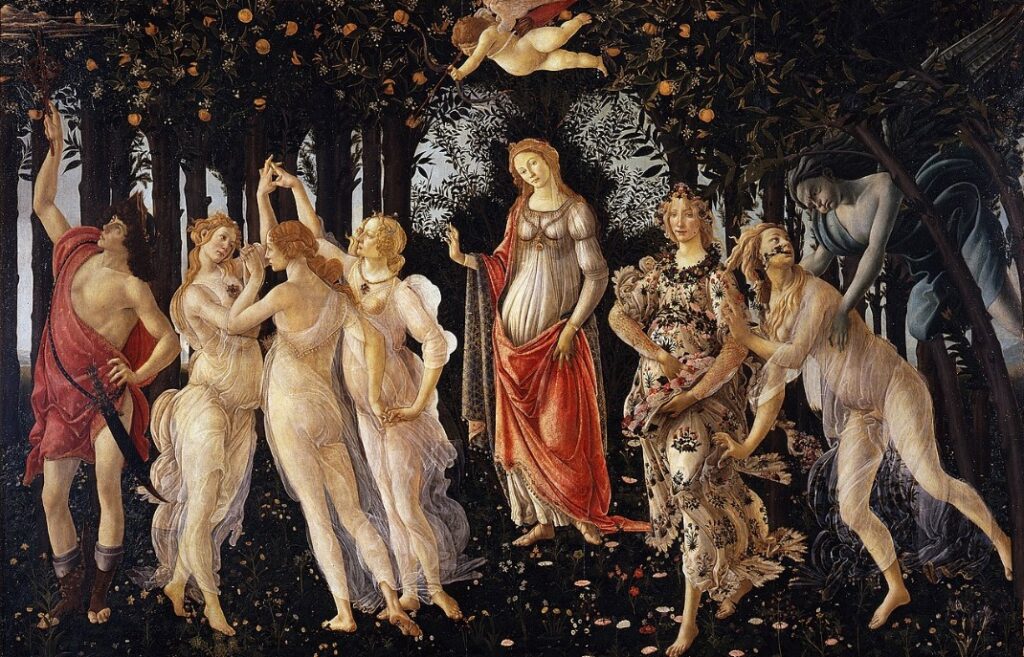
Botticelli based the image on the birth of the ancient Greek goddess of love, Aphrodite, later known to the Romans as Venus. The earliest account of her origin is in Hesiod‘s Theogony where he desribes her being blown to the shore of Cyprus. Botticelli was taken in by the Medicci family and is likely to have been educated in ancient texts such as Theogony, thought to be written in the 8th or 7th century BC, in which Hesiod tells the origins of the ancient Greek gods. Hesiod also describes Aphrodite’s birth.
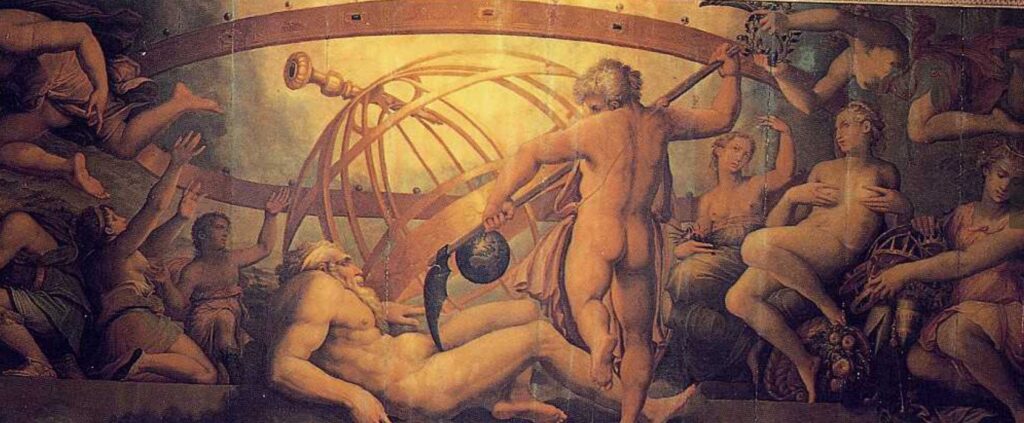
Uranos (heaven) hated many of the children he fathered with Gaia (earth). These included the Cyclops and the Hecatoncheires who Uranus stole and hid so they would never see daylight. Gaia created flint and used it to made a sickle with a serrated edge. Her youngest son Chronos (Saturn) volunteered to punish his father. While Uranos and Gaia were in bed together, Chronus used the sickle to castrate him. From the blood and semen were born the Erinyes and Meliae while from the foam came Aphrodite. The painting is called the birth of venus, but it depicts her fully formed with no sign of the horror that produced her.
The face of Venus is also the subject of conflicting speculation. Many sites say she is Simonetta Vespucci, a cousin of Semiramide Appiani, and relative of Amerigo Vespucchi, a Florentine traveller who America was named after. Others claim it isn’t her at all. Simonetta died age 23 in 1476, many years prior to The birth of Venus. Supporters of the Simonetta theory use the detail that Botticelli asked to be buried at her feet in the church of San Salvatore di Ognissanti, but this was also the parish church of Botticelli himself. Where else would he be buried?
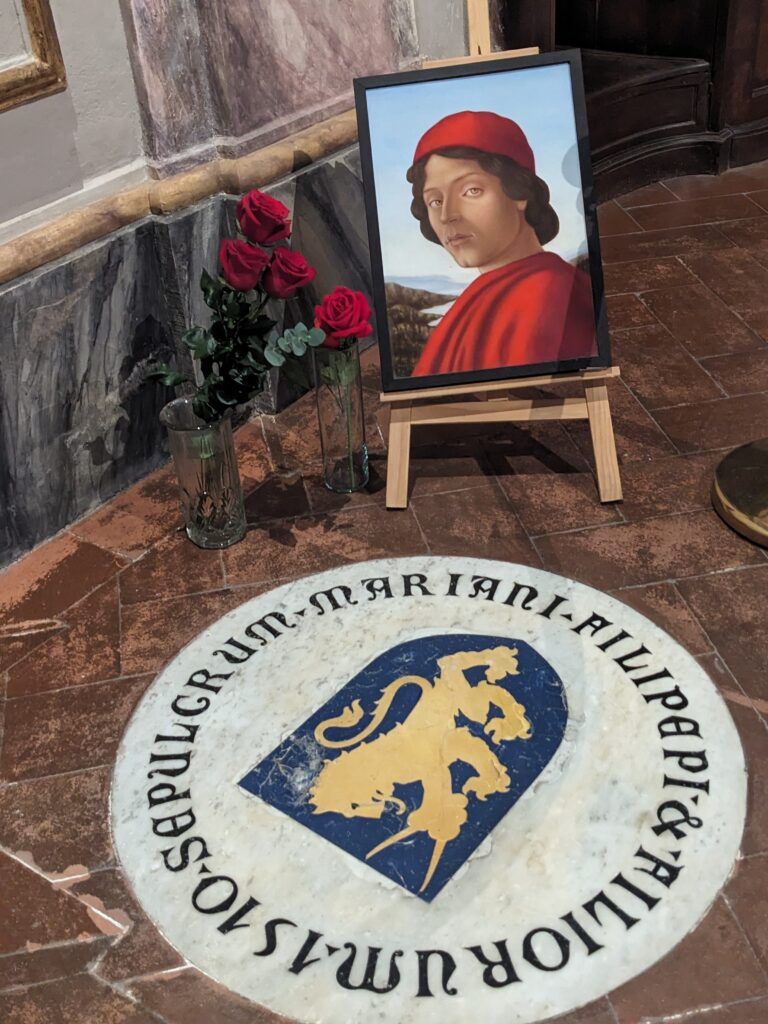
In these times where fake news is so much in the headlines, any research you do forces you face-to-face with how alternative truths can be presented as facts. It’s getting increasingly harder to dig through the mass of information to find what might be relied upon. We’re used to knowing everything about people, in particular those in the public eye. Whenever there’s a gap in our knowledge we seek to fill it with something rather than accept we simply don’t know.
Not knowing makes us uncomfortable but these are the spaces where creativity can thrive. Maybe we should welcome these gaps in our knowledge rather than seeking to complete them.

The annunciation by Botticelli